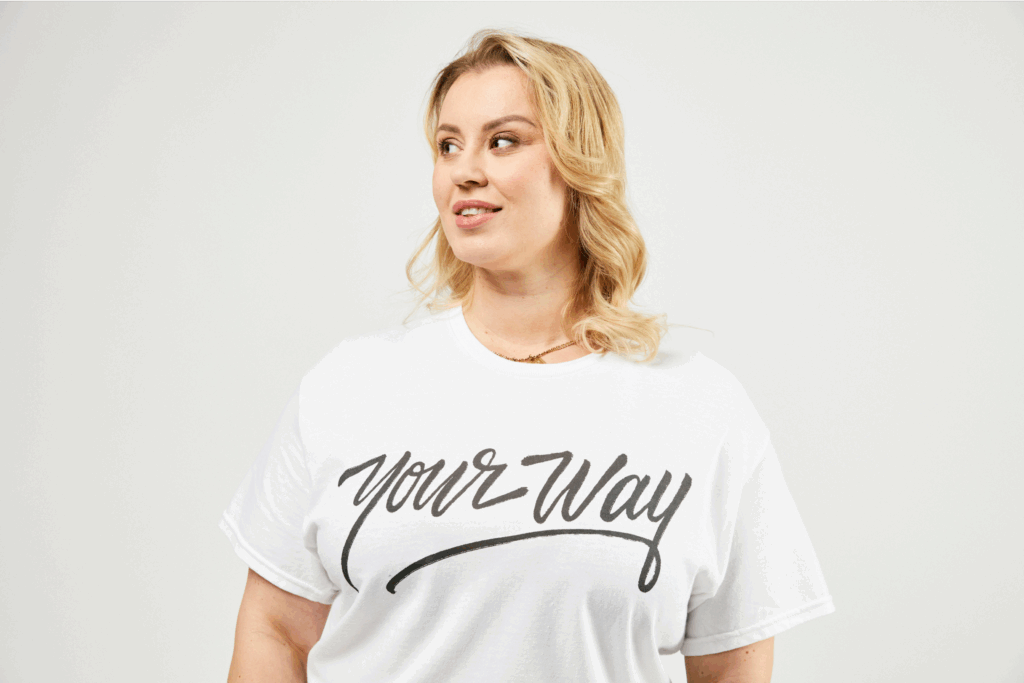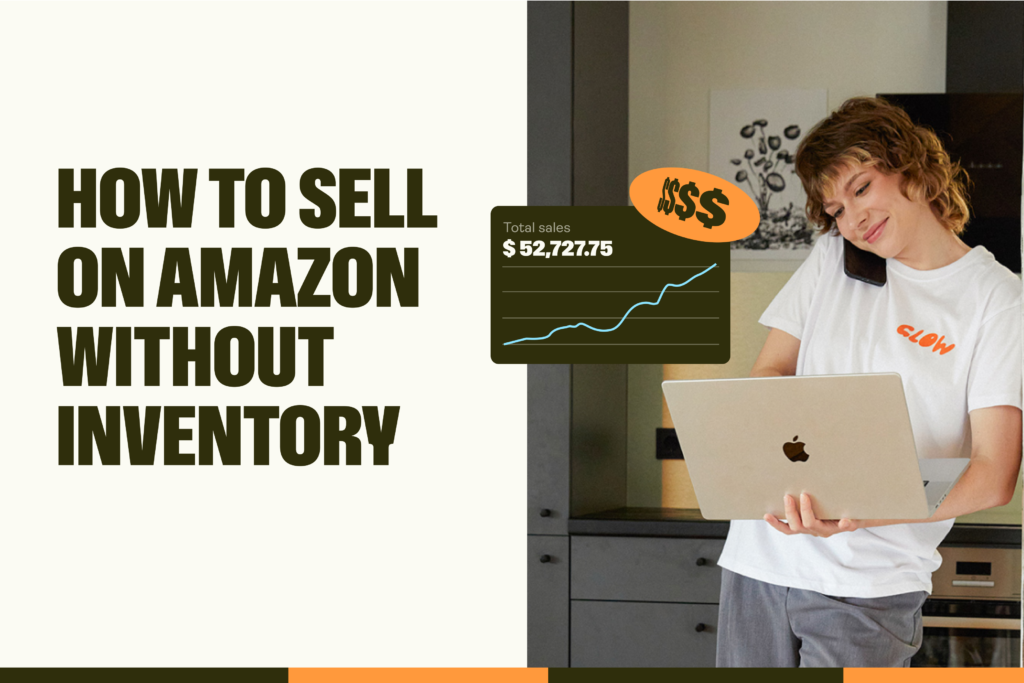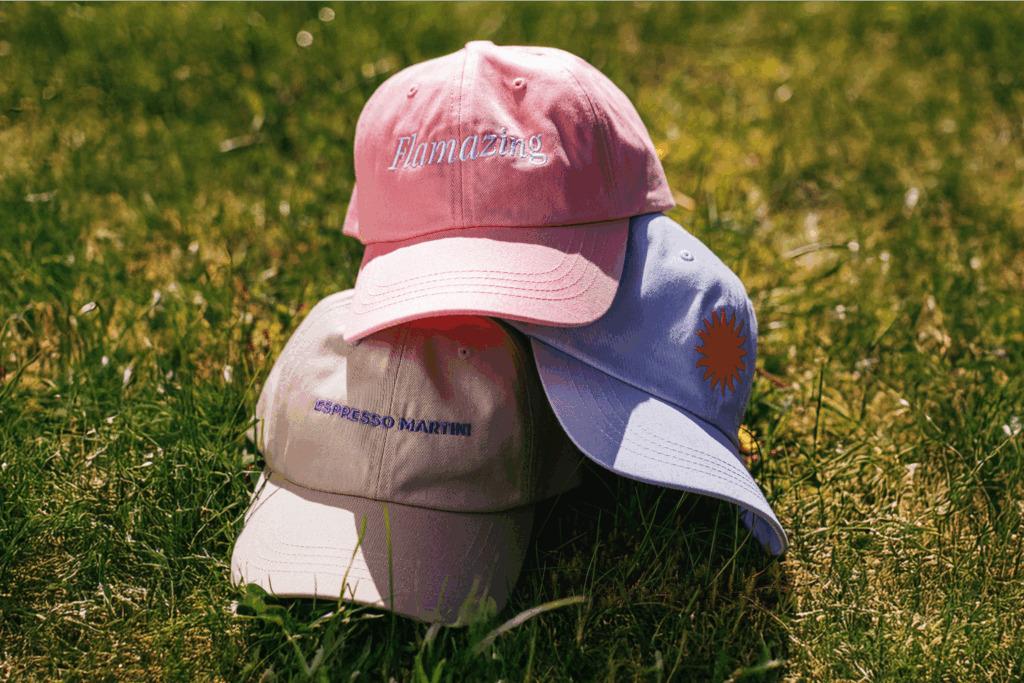Start a print-on-demand business today
The internet is a free-access environment, but finding a good design you can instantly download doesn’t mean you can copy it to your store. The difference between casual consumption and for-profit commerce is following copyright laws.
Taking a design asset from an unknown source can be a copyright violation. Obtaining permission is crucial.
Receiving copyright infringement claims out of nowhere can be intimidating, but there are ways to avoid it. Maintain a fair store policy by learning about intellectual property, fair use, what constitutes an infringement, and why you should put original content first.
For a POD merchant, unique designs are foundational. Your audience will already have existing preferences, but copying a trend too closely can cause a significant risk to your business. Ideas don’t have to be original, but your content should. If an artist has the perfect design you’ve been looking for, obtain permission first.
We’ll guide you through the process of understanding copyright laws and how best to handle the commercial nature of selling on-demand designs for your own POD store.
Copyright Infringement 101
Let’s start with a brief introduction of terms. Before we delve through the intricacies of copyright infringement in dropshipping, here are the concepts you’ll find in any discussion of copyright:
Intellectual property
The catch-all term for ownership over created works protected through a copyright act. IP is divided into specific facets of law that determine what you can use freely and what is exclusive to the original owner or author. It covers all of the following:
- Literary or artistic works
- Designs and inventions
- Architecture and installations
- Music and lyrics
- Slogans and brand names
- Images, photos, and articles
- Computer programs and databases
- Trade secrets and organizational practices
Copyright law
Copyright protection of original works of authorship, maintained by their owner or organization. Restricts who gets to use the content for monetary gain without the copyright owner’s permission.
Public domain
Fair-use materials without the need for attribution. You can freely recreate them in designs and imagery.
Fair use
General ideas, historical facts and figures, classic literary works, quotes, and symbols are fair use. You can freely incorporate them into your online business. Creative Commons and public domain archives access tons of free original works that can be used to develop designs.
Avoiding copyright infringement
When using an existing work, find and contact the owner or their representative. You need to acquire a licensing agreement. In practice, it’s safer to manage an IP store policy of sticking to your own unique ideas.
Note that using someone else’s content is an unsustainable practice. Ongoing costs for design rights can run up your expenses or risk becoming too reliant on someone else’s creative work. Both can end or change unexpectedly and impact your business growth.
1. What is intellectual property?
Intellectual Property laws exist as standalone civil rights or creator-specific attribution rules, depending on the country. The regulations apply specifically to commerce, and there are civil penalties for profiting from someone else’s work. In the US, copyright infringement penalties can include paying for statutory damages due to lost profit, fines from $200 to $150,000, and even jail time of up to five years.
Some copyright owners are more obtuse than others – especially when it comes to a copyrighted song – and even large corporations get into hot water from time to time. You don’t have to pay a quarter every time you say a song title, but things can get dicey when there are clear commercial assets on your products.
IP law includes protections for:
- Patents – technical inventions that you can’t recreate by law without express permission. These include engineering and design techniques, maps, blueprints – anything that does something in a new way.
As a unique example, a dispute that went all the way to the US Supreme Court determined that new genetically spliced plants – even if growing and profited from by accident and the force of nature – are by law considered patents you need permission to distribute. This action has led to many legal troubles for farmers.
- Copyright – copyright exists for creative works in a tangible form. Abusing a holder’s exclusive right will elicit copyright notice claims. If you find one in your email, immediately stop before receiving a substantial fine.
Things like parody, paraphrasing, and homage are exceptions to the rule. You can modify and create contemporary renditions of popular media, but this is an unsustainable practice in the long run.
Opinions on pop-culture can change. Having a consistent and original brand will keep more invested customers.
Many creators fall for an easy money-making technique that ends up being at risk of copyright or fails to grow beyond a gimmick. A rule of thumb is that no one will take a bootleg design seriously, but an original brand will instantly have nothing to compare it to – it’ll be unique.
- Trademarks – Registered trademarks are equivalent to a business identity. When capitalized or used similarly, even simple sayings like Eat Fresh become copies of an existing Subway restaurant trademark.
Trademarks are usually slogans, titles, and brand logos protected for competitive market reasons. Without trademarks, it would be easy to confuse and mislead customers. It’s generally unwise to copy these without a sale or other transfer of ownership.
Using a trademark item, even if you’re willing to pay for it, won’t guarantee you results. Trademark laws protect brand identities against other parties in the market, which means you’re better off building your own unique brand image.
- Trade Secrets – Intangible processes, recipes, organizational functions, and other unique bits of valuable information fall into this category. Unless you plan to unveil Coca-Cola’s secret recipe on a t-shirt design, trade secrets rarely get used outside of their specific market.
2. Copyright law vs public domain

Copyright is rooted in a foundational international treaty via the Berne Convention. It has since been the basis for the protection of creative expression. Section 107 of the Copyright Act details the four factors promoting fair use and copyright infringement in the US.
- Purpose of use – either commercial use or nonprofit educational purposes. The latter, such as private study, is fair use.
- Nature of the copyrighted work – creative works have more copyright claims than factual works like informational pieces.
- Amount of the copyright’s use – the more you take from a copyrighted work, the higher the chance it’ll become a copyright infringement.
- The effect upon the potential market – whether using the copyrighted work infringes upon the owner’s potential market holdings and profit.
When designing from someone’s existing work to appeal to similar audiences, you must understand that even modified creations can be considered theft. Using direct assets isn’t as preferable as an original twist to the idea.
It’s better to stick to the public domain. When using copyrighted content, you need to receive a licensing agreement from the purchase or tangible permission from the copyright holder. It’s both time-consuming and largely unsustainable if you want to develop your own loyal user base.
Copyright:
Copyright means that the materials in question are not available for commercial use. This involves anything fixed and existing in a tangible medium: digitally, on paper, or communicated by the copyright holder.
An artistic work remains protected by copyright posthumously after the artist for 70years, although different types of work are subject to varying lengths of time.
Public domain:
Public domain is helped by non-profit organizations like Creative Commons and other archival tools that facilitate the free sharing and distribution of content for nonprofits and general cultural values. Creative Commons might not have the most up-to-date content for new and exciting design ideas, but they’re a 100% free concept generator.
If copyright holdings are expired, have been forfeited, let go, or denied as legitimate, a work enters the public domain and is fair use. Some companies, like Disney, spend a lot of resources to keep exclusive rights even after the time limit, but Winnie the Pooh, for instance, became public domain in 2022.
Does this mean that it’s fair dealing to put these iconic media figures on your t-shirts? Well, probably not, since later renditions of Winnie the Pooh characters, with a high-backed legal team to support them, will still make sure to claim exclusive rights.
3. How to find a copyright owner

Avoiding copyright infringement starts by receiving permission from the owner. It’s easiest if you’ve been maintaining a network of like-minded content creators for collaboration.
When researching, a copyright owner can be challenging to find. Internet mediums are unpredictable due to vast non-commercial sharing. If finding a profile, signature, or watermark is impossible, try checking out Copyright Offices in the US and Canada.
Note that you should never assume that something is fair use, even if you’ve exhausted attempts to locate an author.
If you’re thinking of including items that might be considered a patent or trademark, reach out to these IP Offices: United States Patent and Trademark Office and Canadian Intellectual Property Office
4. Top 4 tips on how to avoid copyright infringement
Copyright is infringed upon all the time, but there are always risks associated with it.
React culture, for instance, is when content creators react to something. This type of redistribution counts as copyright infringement. In many cases, the original creator won’t file a copyright notice due to the free publicity. Many creators fall down the content ID rabbit hole, and can end up losing their entire media presence.
1. Assume that all work is copyrighted
Even if it’s free to download, assume that anything that you find online is copyrighted material. You might have heard about things like the 30% rule of copyright law, but these are unfounded myths. Context and location determine whether any kind of recreation or reimagination of a work infringes on the rights of the copyright holder.
Just because some content takes longer to receive copyright claims doesn’t mean the infringing party is less liable. Proper attribution is a mandatory requirement for free expression.
Creators often overlook copyrights in parts of their design. They might assume the work is too niche, abstract, or that their modifications are sufficient. Even minor things like sound recordings, copyrighted words, or traced images can cost you.
2. Get permission before sharing, altering, or selling other people’s work
Once you find a work’s author, contact them for permission before altering and sharing the work, and be sure to indicate that you plan to profit off the design. While there are instances where that’s all you need, most artists will in turn expect commission fees for each of their creative works. Leveraging competitive advantages from artists already selling their own work will not succeed in higher growth due to reflecting negatively on your business’s corporate image and the possibility of scandal.
3. Retain license and selling agreements
When engaging in any trade of resources used for your store, retain license and selling agreements. Especially if you’ve received creative work permissions pro-bono, the original creator’s mind can change when you start to overshadow them with profit.
Save all agreements and receipts for as long as you can, and make sure to inspect whether any licenses need to be updated and renewed before you distribute copies.
4. Have a store IP policy
Make a set of guidelines that follow all creative design aspects of your business process. Have a set plan and decide on the time needed to manage licensing, consultation, and budgeting needs. Create an ID system that your team can abide by and focus mainly on original work rather than derivative copies.
Frequently asked questions
When making t-shirt designs for a specific niche, avoid copyright claims by either making original content or finding materials in the public domain. When using someone else’s work, contact the author and establish a licensing agreement based on the copyright laws in your region. Always assume all work is copyrighted before selling.
As you establish your shop, never use artwork that isn’t yours or that you don’t have the rights to. Always check who the author of the work is and whether the work is fair use. When running a for-profit business, always be mindful of who’s designs are on your site and contact the artist to obtain permission.
To avoid image copyright, get a general understanding of the copyright law for your business location and how you can overstep into a copyright infringement. Refrain from taking images from the internet, but if you do, contact the photographer or artist and discuss ways to obtain a licensing agreement. Consider subscribing to image-sharing sites that offer both free-use and paid image options.
Conclusion
Copyright laws are ruthless. If you want to create a derivative work, you’ll have to jump over a lot of hurdles to avoid suffering penalties and costs for infringing work.
Transitioning digital materials for your online store or any other such use of copyrighted material requires a licensing agreement, without which you might end up needing more legal advice.
Maintain a unique product instead – avoid copyright infringement entirely. Sustain a quality brand and be fully responsible for the designs you put onto your products. Find other helpful design ideas for your POD business and create an original basis for your store catalog.
Learn more about Print on Demand and starting a print-on-demand business.












